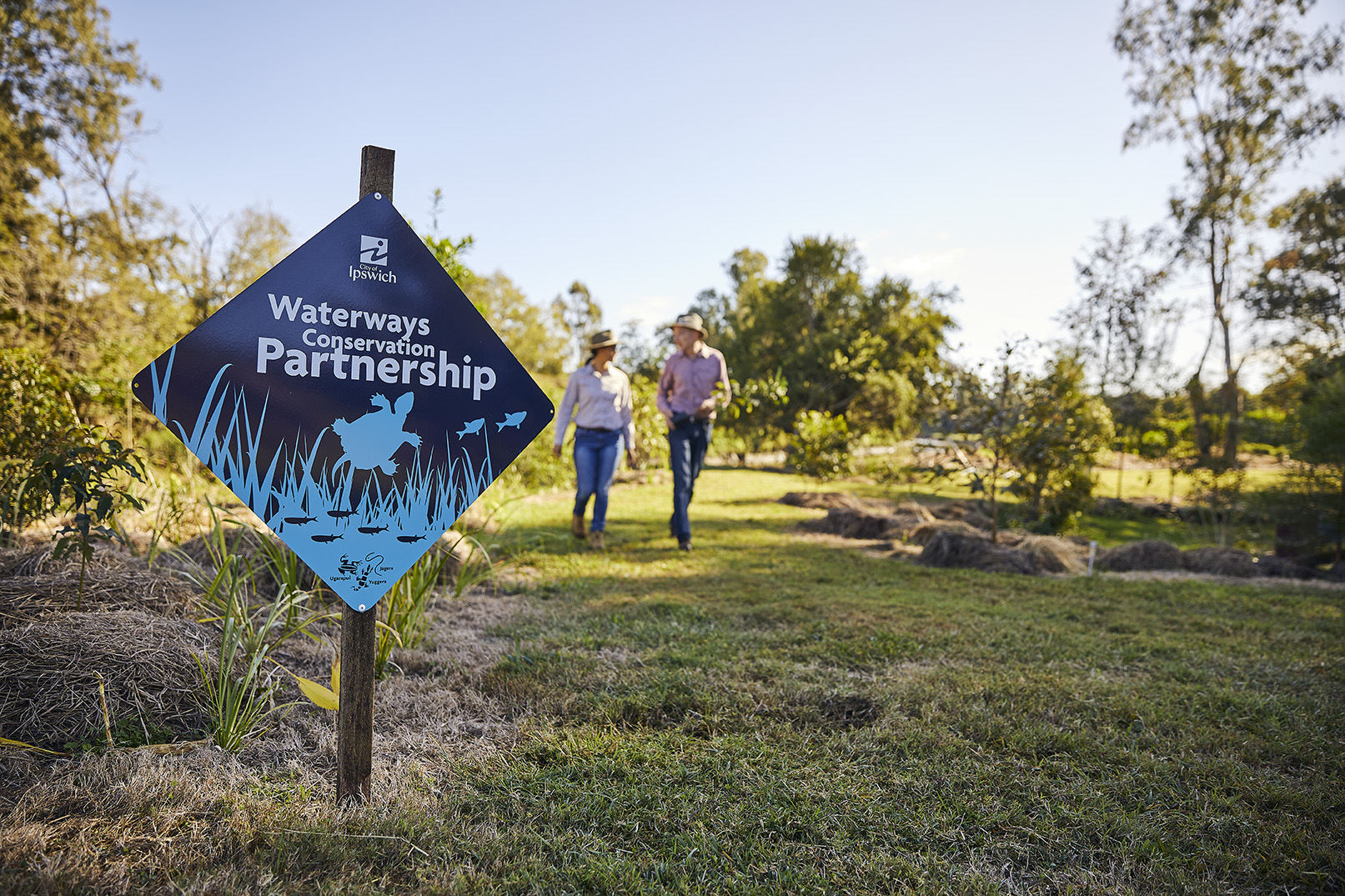Two years of hard work is starting to pay off for an East Ipswich couple who have overcome literal brick walls in their transformation of their Bremer River block.
Thick infestations of castor oil weed and glycine vine on nearby land is a reminder just how far Peter and Emily have come.
The narrow, sloping fill site has thrown up many challenges including bricks, broken clay pipes and flood debris but through a network of like-minded landowners, a council landholder partnership and Nature Conservation Grant, they have made incredible strides.
Emily said it was a neighbour with knowledge of bush regeneration and waterway conservation who told them about the council partnership program – and they were soon hooked.
“We started looking into it, found out we were eligible for 200 plants a year, then we started planning out what we want to do,” she said.
“We found ourselves down here with headlamps working between 7-10pm after work to get it done. We didn’t know we were green thumbs but now we are obsessed.
“We’ve met a lot of people through it. There are a lot of people in the area who offer to come and do working bees.
“And I think it’s just good that we can help out the Bremer River and clean it up on our spot, and eventually we can help other properties do it as well.”
Emily said they had learned a lot in a short time, from how to plant in the sandy soil beside the river and the thick clay on the slope, to weed identification and removal, through to dealing with the fill site that in some spots has brick walls just under the surface.
“We decided in a lot of spots we needed to do no dig planting. We’ve just raised mounds of soil and eventually the roots will find their way around whatever bricks they encounter,” she said.
“We are also doing hessian bags and filling them with soil, and then the plant is on top of the hessian bag. So it’s helping with the erosion, and the bag will break down. Anything we’ve put down underneath we have made sure is biodegradable.”
Now there are masses of lomandra, bottlebrush, wattle, flame trees, river sheoaks and other native species – many of which were sourced from Council’s nursery – starting to flourish. The improvements have also attracted a greater variety of wildlife, particularly birds and lizards.
“We could not have done this without council’s help,” Emily said. So far their Nature Conservation Grant has allowed them to buy and install jute matting for erosion, mulch and soil – and there is more to come.
“Probably the mulching is the hardest (work) because we’ve done 16 cubic metres of mulch and it’s all about 20cm thick, so one section has taken us about 40 wheelbarrows,” she said.
That work is still in full swing – there could soon be another load of mulch on the way – but there is a sense of satisfaction for these landowners when they look at what has been achieved so far.
Council’s Nature Conservation Grants open for applications on July 1.
The grants are open to landowners who have Voluntary Conservation Agreements with council. There are different types of agreement that provide tailored support for bushland, waterway and koala conservation.
The Landholder Partnerships Program is funded through the Enviroplan initiative.

